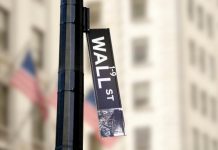The world is on the verge of a severe economic depression, and unfortunately, without having fully recovered from the 2008 financial crisis.
Factories around Europe slow down or halt production in an effort to contain further contagion of the coronavirus, or because employees start being tested positive for coronavirus.
The pandemic continues shaking small, medium, and international size businesses, the first two being on the brink of severe financial difficulties as a result of several weeks long shutdowns.
More globally, there is an increasingly restricted goods and people circulation across globe. Airline companies are perhaps the most hit by the coronavirus-led crisis. US government rejected the airline companies’ demand for $30 billion in grants but proposed a $50-billion loan package to help them survive the crisis. Schengen countries closed their borders, as US and Canada agreed to stop all non-essential traffic between the two countries.
The European Central Bank (ECB) announced a fresh 750-billion-euro worth bond and private securities purchases package, while the Reserve Bank of Australia (RBA) cut its policy rate to the fresh historical low of 0.25%.
Alas, equities’ race to the bottom continues at full speed.
The S&P500 lost up to 10% on Wednesday, before a late session rebound trimmed losses into the close. But US futures continued their journey south after the bell, as Asian stocks remained heavily offered. WTI crude tanked to $20 a barrel, before rebounding near 12% to $24 in Asia. FTSE futures (+0.88%) hint at recovery at the open. But British energy stocks will likely remain on the chopping block, after having shred 50% to 60% of their value since the beginning of this year.
And despite heavy losses, we do not rule out the possibility of a deeper bear market. Gone is the view that the monetary and fiscal stimulus would help bettering the investor mood.
Looking at data, inflation in Japan slowed to a four-month low in February, and the worst is yet to come.
The Euro area inflation figures, on the other hand, were left unrevised during the same month, though the sharp decline in oil prices point at the possibility of a dramatic decline in consumer prices starting from March. JP Morgan expects 0% inflation in the second quarter of 2020.
Curiously, the Australian jobless rate improved from 5.3% to 5.1% in February and Japan’s all industries activity index jumped to 0.8% in March versus 0.3% expected by analysts and -0.1% printed a month earlier. Yet, the better-than-expected data couldn’t enchant investors much.
Due today, the Philly Fed manufacturing index, which recorded a surprise peak at 36.7 in February, could fall to 10.0 according to a consensus of analyst expectations. We believe there is room for disappointment, a negative read would not be a shocker.
The US dollar index extends gains past the 101 level, as a result of a sudden rush to the greenback. The rally that started by the end of last week is believed to be driven by a combination of fund liquidation and a breakdown in US commercial paper (CP) markets – when the yield on 30-day CP shot up to 3.2% from 1.6% as investors lost confidence in these short-term unsecured debt instrument and opted for a quick winding up, oddly weeks after the sell-off in equities started. Moving forward, the US dollar rally should cool off with the Fed’s intervention through direct CP purchases, but forced or desired portfolio liquidations will likely continue feeding into the US dollar.
In Switzerland, the Swiss National Bank (SNB) will decide whether to cut interest rates at today’s monetary policy meeting. While interest rate futures price in a 14-basis-point cut over the next twelve months, we believe that the SNB will hold fire today, in the same way than the European Central Bank (ECB) and the Bank of Japan (BoJ) which also run on negative interest rates. But both the ECB and the BoJ opted for alternative measures such as increased asset purchases, targeted loans, and even loans backed by debt in the case of Japan to support their virus-infected economies.
On top of the looming economic recession, the strong franc continues being a severe headache for Swiss policymakers, but the SNB cannot intervene directly via the FX market as the US put Switzerland on its watchlist of currency manipulators. So, as a last resort, it is possible that the SNB announces new policy measures to fight against the strong franc, such as balance sheet expansion, cheap loans, etc.












